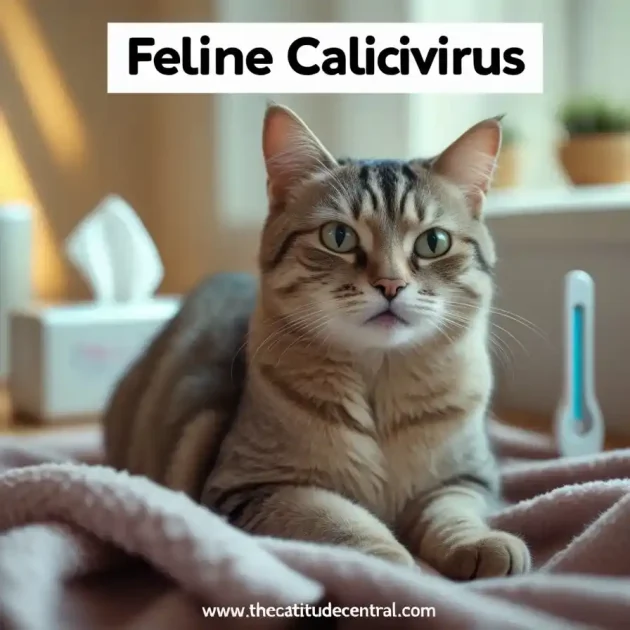Cat sneezing is a common concern for pet owners, often sparking worry about whether it’s a minor issue or a sign of something serious. Just like humans, cats can sneeze due to various reasons, from simple irritants to underlying health conditions. Understanding the causes of sneezing, recognizing symptoms, and knowing when to act can make all the difference in keeping your feline friend healthy.
This comprehensive guide explores why cats sneeze, how to identify potential problems, and actionable steps to manage and prevent cat sneezing. We’ll also recommend vet-approved products available on Amazon to support your cat’s respiratory health and answer frequently asked questions based on recent trends.
Understanding Cat Sneezing: What’s Normal and What’s Not
Sneezing is a reflex action where your cat expels air through the nose to clear irritants from the nasal passages. Occasional sneezing is normal, especially if your cat encounters dust or strong odors. However, persistent or frequent cat sneezing could indicate an issue requiring attention. Let’s break down the key reasons behind sneezing and how to distinguish between harmless and concerning cases.
Common Causes of Cat Sneezing
Several factors can trigger sneezing, ranging from environmental irritants to infections. Here are the most common causes:
1. Environmental Irritants
Cats have sensitive noses, and exposure to dust, pollen, or household chemicals can cause cat sneezing. Common irritants include:
- Dust and Pollen: Found in homes or outdoor environments, these can irritate your cat’s nasal passages.
- Cleaning Products: Strong-smelling cleaners like ammonia-based sprays can trigger sneezing.
- Perfumes and Aerosols: Scented candles, air fresheners, or hairspray may lead to sneezing.
To reduce irritants, consider using an air purifier like the LEVOIT Air Purifier for Pets, which captures dust, pollen, and pet dander, creating a cleaner environment for your cat.
2. Upper Respiratory Infections (URIs)
One of the most frequent causes of sneezing is an upper respiratory infection, often caused by viruses like feline herpesvirus (FHV) or feline calicivirus (FCV). These infections are highly contagious, especially in multi-cat households or shelters. Symptoms include:
- Persistent sneezing
- Nasal discharge (clear, yellow, or green)
- Watery eyes or conjunctivitis
- Lethargy or reduced appetite
URIs often require veterinary care, especially if symptoms persist beyond a few days. Your vet may recommend supportive care, such as the Vetoquinol Viralys L-Lysine Supplement, which supports immune health in cats with feline herpesvirus.
3. Allergies
Cats can develop allergies to environmental factors, food, or fleas, leading to sneezing. Unlike humans, cats rarely sneeze due to seasonal allergies, but food or flea allergies can cause respiratory symptoms. Signs include:
- Sneezing with itchy skin or ear infections
- Red, inflamed skin
- Excessive grooming
If allergies are suspected, consult your vet for allergy testing or a hypoallergenic diet trial. Products like Hartz UltraGuard Flea & Tick Collar for Cats can help prevent flea-related allergic reactions.
4. Foreign Objects
A foreign object, like a blade of grass or a small particle, lodged in your cat’s nasal passage can cause sudden, intense sneezing. Other signs include:
- Pawing at the face
- One-sided nasal discharge
- Distress or discomfort
This is a veterinary emergency, as foreign objects can lead to infections if not removed promptly.
5. Dental Issues
Surprisingly, dental problems can contribute to sneezing. Infections in the teeth or gums can spread to the sinuses, causing sneezing and nasal discharge. Regular dental care, such as using Petkin Plaque Tooth Wipes, can help maintain oral health and reduce the risk.
6. Serious Conditions
In rare cases, persistent cat sneezing may signal serious conditions like nasal tumors, fungal infections, or chronic rhinitis. These require immediate veterinary attention and diagnostic tests like X-rays or biopsies.
Symptoms to Watch For
While occasional cat sneezing is normal, certain symptoms suggest a need for veterinary intervention:
- Frequent or chronic sneezing
- Colored nasal discharge (yellow, green, or bloody)
- Difficulty breathing or wheezing
- Loss of appetite or weight loss
- Fever or lethargy
If your cat shows these signs, contact your veterinarian promptly to address the underlying cause of sneezing.
Diagnosing Cat Sneezing
Diagnosing the cause of cat sneezing involves a combination of physical exams, history review, and diagnostic tests. Your vet may:
- Conduct a physical exam to check for nasal discharge, eye issues, or dental problems.
- Perform blood tests to rule out infections or systemic issues.
- Use imaging (X-rays or CT scans) to detect foreign objects or tumors.
- Take nasal swabs to identify viral or bacterial infections.
For at-home monitoring, consider the WOPET Pet Camera with Treat Dispenser to keep an eye on your cat’s symptoms and behavior when you’re not home.
Treatment Options for Cat Sneezing
The treatment for cat sneezing depends on the underlying cause. Here’s a breakdown of common approaches:
1. Managing Environmental Irritants
- Clean the Environment: Vacuum regularly and use pet-safe cleaning products.
- Use a Humidifier: A device like the Pure Enrichment MistAire Ultrasonic Cool Mist Humidifier can keep nasal passages moist and reduce irritation.
- Limit Exposure: Keep your cat away from strong odors or smoky environments.
2. Treating Infections
- Antibiotics: For bacterial infections, vets may prescribe antibiotics like doxycycline.
- Antiviral Support: L-Lysine supplements, such as Vetoquinol Viralys, can reduce the severity of viral infections.
- Hydration and Nutrition: Ensure your cat stays hydrated and eats well to support recovery.
3. Addressing Allergies
- Allergy Testing: Work with your vet to identify triggers.
- Medications: Antihistamines or steroids may be prescribed for severe allergies.
- Flea Control: Use products like Advantage II for Cats to prevent flea allergies.
4. Removing Foreign Objects
Foreign objects require professional removal, often under sedation. Do not attempt to remove objects yourself, as this can worsen the issue.
5. Dental Care
Regular dental cleanings and at-home care with products like Virbac C.E.T. Enzymatic Toothpaste can prevent dental-related sneezing.
6. Serious Conditions
For chronic or severe cases, your vet may recommend surgery, antifungal medications, or other specialized treatments.
Preventing Cat Sneezing
Prevention is key to reducing sneezing and keeping your cat healthy. Here are practical steps:
- Vaccinations: Ensure your cat is up-to-date on vaccines for feline herpesvirus and calicivirus.
- Regular Vet Visits: Annual checkups can catch issues early.
- Clean Environment: Use air purifiers and wash bedding regularly.
- Healthy Diet: Feed high-quality food to boost immunity, such as Purina Pro Plan Veterinary Diets HA Hydrolyzed for cats with food sensitivities.
- Stress Management: Reduce stress with toys like the Catstages Tower of Tracks Cat Toy (available on Amazon) to keep your cat engaged and happy.
When to See a Vet
If cat sneezing persists for more than a few days, is accompanied by other symptoms, or worsens, consult a veterinarian immediately. Early intervention can prevent complications and ensure your cat’s comfort.
Recommended Amazon Products for Cat Sneezing
To support your cat’s respiratory health, consider these vet-recommended products available on Amazon:
- LEVOIT Air Purifier for Pets: Reduces airborne irritants like dust and pollen.
- Vetoquinol Viralys L-Lysine Supplement: Supports cats with viral infections.
- Pure Enrichment MistAire Ultrasonic Cool Mist Humidifier: Keeps nasal passages moist.
- Advantage II for Cats: Prevents flea allergies that may cause sneezing.
- Petkin Plaque Tooth Wipes: Promotes dental health to reduce sinus issues.
Always consult your vet before introducing new products or supplements to your cat’s routine.
FAQs About Cat Sneezing
Based on recent trends and common questions from pet owners, here are answers to frequently asked questions about cat sneezing:
Why is my cat sneezing a lot suddenly?
Sudden cat sneezing could be due to environmental irritants, a foreign object, or the onset of an upper respiratory infection. Monitor for additional symptoms like nasal discharge or lethargy, and consult a vet if it persists.
Can cat sneezing be contagious to other cats?
Yes, if caused by a viral or bacterial infection like feline herpesvirus or calicivirus, cat sneezing can be highly contagious, especially in multi-cat households. Isolate the affected cat and seek veterinary advice.
Is cat sneezing a sign of allergies?
While less common than in humans, cat sneezing can be caused by allergies to food, fleas, or environmental factors. A vet can help identify the trigger through testing.
How can I stop my cat from sneezing?
Address the underlying cause by reducing irritants, using a humidifier, or treating infections with vet-prescribed medications. Products like air purifiers and L-Lysine supplements can help.
When should I worry about my cat sneezing?
Worry if cat sneezing is frequent, accompanied by colored discharge, breathing difficulties, or behavioral changes. These may indicate a serious issue requiring veterinary attention.
Conclusion
Cat sneezing is a common issue that can range from harmless to serious, depending on the cause. By understanding the triggers—whether environmental, infectious, or allergic—you can take proactive steps to manage and prevent it. From maintaining a clean environment to using vet-recommended products like those available on Amazon, you can support your cat’s respiratory health.
Always monitor symptoms closely and consult a veterinarian for persistent or severe cases. With the right care, you can keep your feline friend happy, healthy, and sneeze-free.
Sources



